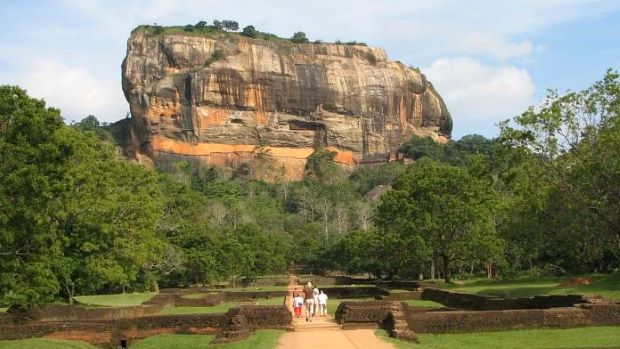By Sunela Jayewardene
In the journey of humankind, it is the lands in the proximity of the Indian Ocean, with its warm waters and rich coastal forests that first record the presence of the human species. Starting from the ‘Out of Africa’ migration some 70,000 years ago, within 20,000 years, homo sapiens reached the furthest shore of this immense, tropical ocean and colonized the furthermost continent of Australia. But this is only the best-known and simplest line of migration of our ancestors.
Despite its island state, the earliest record of human fossils in South Asia comes from Sri Lanka. Even in this era of high technology, in this extensive region, why are the oldest fossils discovered from an island nation? If this is an indication that the island was first populated by seafarers from Africa, before their cousins meandered across Asia and crossed overland, is still unknown.
Perhaps the complete story of the peopling of Lanka will always be a mystery and, ultimately, it matters little that pieces of this jigsaw may forever lie buried in our red laterite soils and fine sandy sea beds. However, to attempt to gain a simple grasp as to where and when the Mayuranga clan emerged, I will sketch a basic timeline to understand the journey of humankind to Lanka.
For the longest time, anthropologists have told us that the earliest fossils of early modern humans are found on the African continent, dating as far back as 2.8 million years.* In the 1960s, the work of the anthropologists Louis and Mary Leakey in Tanzania fuelled the long-held belief that Africa was indeed the cradle of humankind. With a childhood fascination well-fertilized by the images in the now-defunct Life magazine, I eventually made the pilgrimage to see that cradle and gaze at the famous imprint of indelible footsteps in the paleo-mud of the Olduvai Gorge in Tanzania. In that dusty landscape, it was easy to imagine that our very earliest ancestors had walked upright, in the sparse shade of Olduvai’s acacia groves, over two million years ago. But, thereafter, diluting the ‘Out of Africa’ theory, fossilized hominids were discovered in several places across the globe.
On the Asian landmass and the islands that sprinkle the seas between the Indian and Pacific oceans, fossils of early hominids, dating even further back than the majority of African fossil finds, have been unearthed. Fossils of our genus homo, from the Longgupo Cave in central China, have been dated as 2.48 million years old, making them the second-oldest record of our ancestors to date. But in the Siwalik Hills, which rise like an easy ripple before the Himalayan range, analysis of bone fragments of early cattle species, dated to 2.588 million years, reveal cut marks that could only be attributed to activities of a hominid species. These discoveries skew the established dateline for human evolution and question if the first faltering steps of the earliest hominids came only out of Africa.
Little is known of what progress we had made before the cataclysmic Toba super volcano erupted in the Indonesian archipelago, 74,000 years ago. For about 1,00,000 years preceding the super volcano’s eruption, from the emergence of the first known hominids, fossil remains indicate a hominid species who used fire—a species still evolving and struggling to dominate its fellow residents on Planet Earth. When Toba blew on the Indonesian archipelago, colossal ash clouds billowed, barring the sun’s light and heat, causing a volcanic winter that lasted an entire decade.* The long and bleak winter was followed by a thousand years of abnormally cool temperatures across the world. That dark, cold time is what we know as the Ice Age.
Many species of plants and animals which survived the eruption of Toba would have succumbed to the prolonged winter. In this barren, global landscape, our own species was pushed to the very brink of extinction. In that harsh and never-ending cold, small clans would have taken refuge in the most tolerable climatic zones where plants had also survived, making foraging for limited food sources easier.
Analysis of deep soil samples in East Africa has revealed that humans had lived in caves along equatorial coasts during the Ice Age. When the earth’s last Ice Age reached its maximum, struggling to survive the cold, bands of hominids followed the migrating herds and bird flocks, just as all the other predators did. Leaving a trail of fossil evidence, they moved northwards through Africa, to north-eastern Ethiopia. Archaeological evidence has proven that our early ancestors reached the coast at Bab el-Mandeb, along the beaches shared by modern-day Djibouti and Eritrea. Known as the Gate of Tears (‘Bab’ means ‘gate’, while ‘Mandeb’ means ‘lamentation’ or ‘grief’), legend claims that the waters of the narrow strait of Bab el-Mandeb are the tears shed for all the souls who were lost as Asia and Africa were torn asunder.
-This excerpt from Ravana’s Lanka: The Landscape of a Lost Kingdom by Sunela Jayewardene was published by theprint.in with permission from Penguin Random House India



Comments are closed, but trackbacks and pingbacks are open.